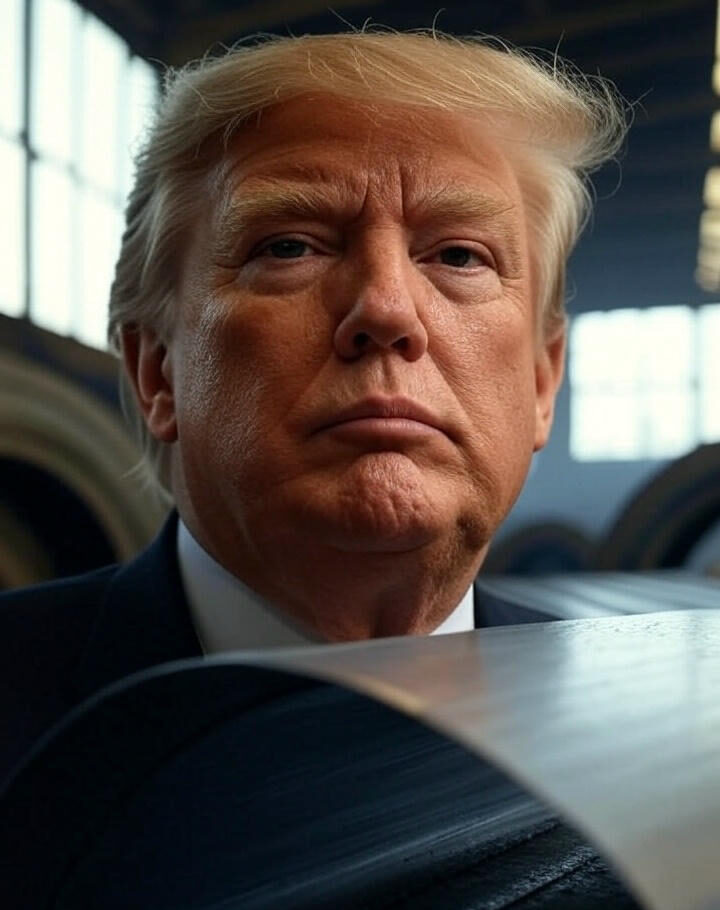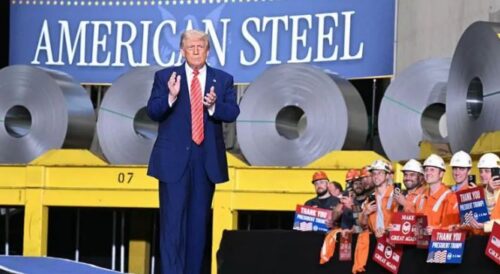Trump’s 50% Metal Tariffs 2025: Impact on Global Markets and U.S. Industry
Trump’s 50% Metal Tariffs 2025: Impact on Global Markets and U.S. Industry
Washington, D.C. – June 4, 2025
The United States has officially implemented a sweeping 50% tariff on imported metals, including steel, aluminum, and critical alloys, as announced by President Donald Trump’s administration. The policy, which came into effect at midnight, marks a bold escalation in the administration’s trade strategy, aimed at bolstering domestic industry while sending ripples through global supply chains.

The tariffs, first proposed during Trump’s campaign, target a wide range of metal imports from countries including China, Canada, Mexico, and the European Union. The administration claims the move will protect American jobs, revive the U.S. manufacturing sector, and counter what it calls “unfair trade practices” by foreign competitors. “We’re bringing back the strength of American steel and aluminum,” Trump declared at a press conference yesterday. “No more letting other countries dump their cheap metals and kill our workers’ livelihoods.”
Immediate Economic Impact
The tariffs have already sparked significant market volatility. U.S. steel and aluminum stocks surged in early trading, with companies like Steel Dynamics and Alcoa reporting gains of over 15%. However, manufacturers reliant on imported metals, such as those in the automotive and construction sectors, saw sharp declines as costs are expected to rise. The Dow Jones Industrial Average dropped 2.3% in pre-market trading, reflecting broader concerns about inflation and supply chain disruptions.
Global markets also reacted swiftly. In Asia, China’s Shanghai Composite fell 3.1%, while Europe’s Stoxx 600 index slid 2.8%. China, a major exporter of steel to the U.S., vowed to retaliate with tariffs on American agricultural goods and electronics, raising fears of a renewed trade war.
Industry and Political Reactions
U.S. metal producers hailed the tariffs as a lifeline. “This levels the playing field,” said Laura Hensley, CEO of American Metalworks, a Pittsburgh-based steel manufacturer. “We’ve been struggling against subsidized imports for years.” Conversely, industries dependent on affordable metal imports expressed alarm. The National Association of Manufacturers warned that the tariffs could increase production costs by up to 20% for some sectors, potentially leading to layoffs and higher consumer prices.
Politically, the tariffs have deepened divides. Republican lawmakers, particularly from industrial states like Ohio and Pennsylvania, praised the move as a win for blue-collar workers. However, Democrats and some moderate Republicans criticized the policy, arguing it risks escalating costs for consumers and alienating key trade partners. “This is a reckless gamble that could hurt more Americans than it helps,” said Senator Maria Cortez (D-NY).
Global Trade Tensions
Internationally, the tariffs have strained diplomatic relations. Canada and Mexico, both major metal exporters to the U.S., condemned the tariffs as “protectionist” and pledged to pursue countermeasures. The European Union signaled it may impose retaliatory tariffs on U.S. goods like whiskey and motorcycles. “We will not stand idly by,” said EU Trade Commissioner Hans Bergstrom. “The global trading system is at stake.”
Analysts predict the tariffs could disrupt supply chains for critical industries, including aerospace, automotive, and renewable energy, which rely on specialized alloys. The move also raises concerns about the availability of rare metals used in batteries and semiconductors, potentially hampering the U.S.’s push for clean energy and technological innovation.

